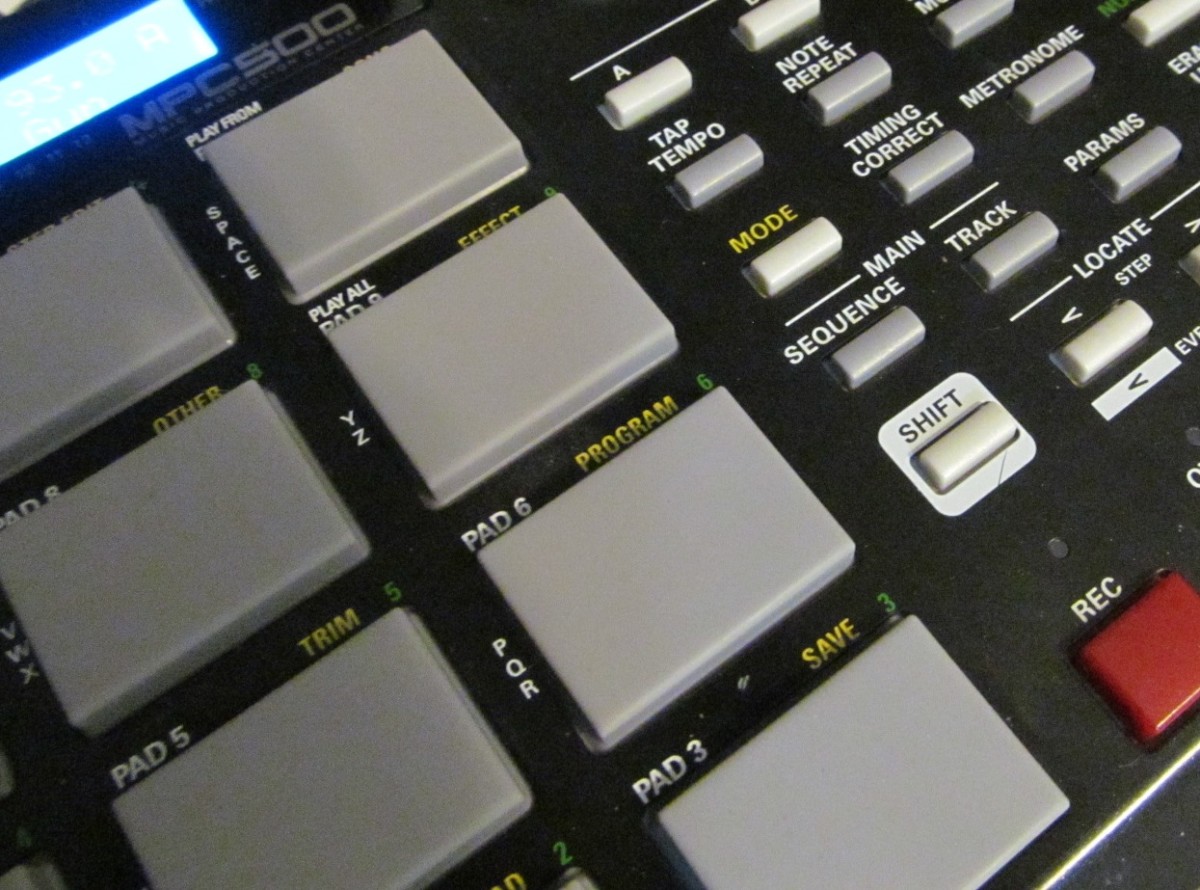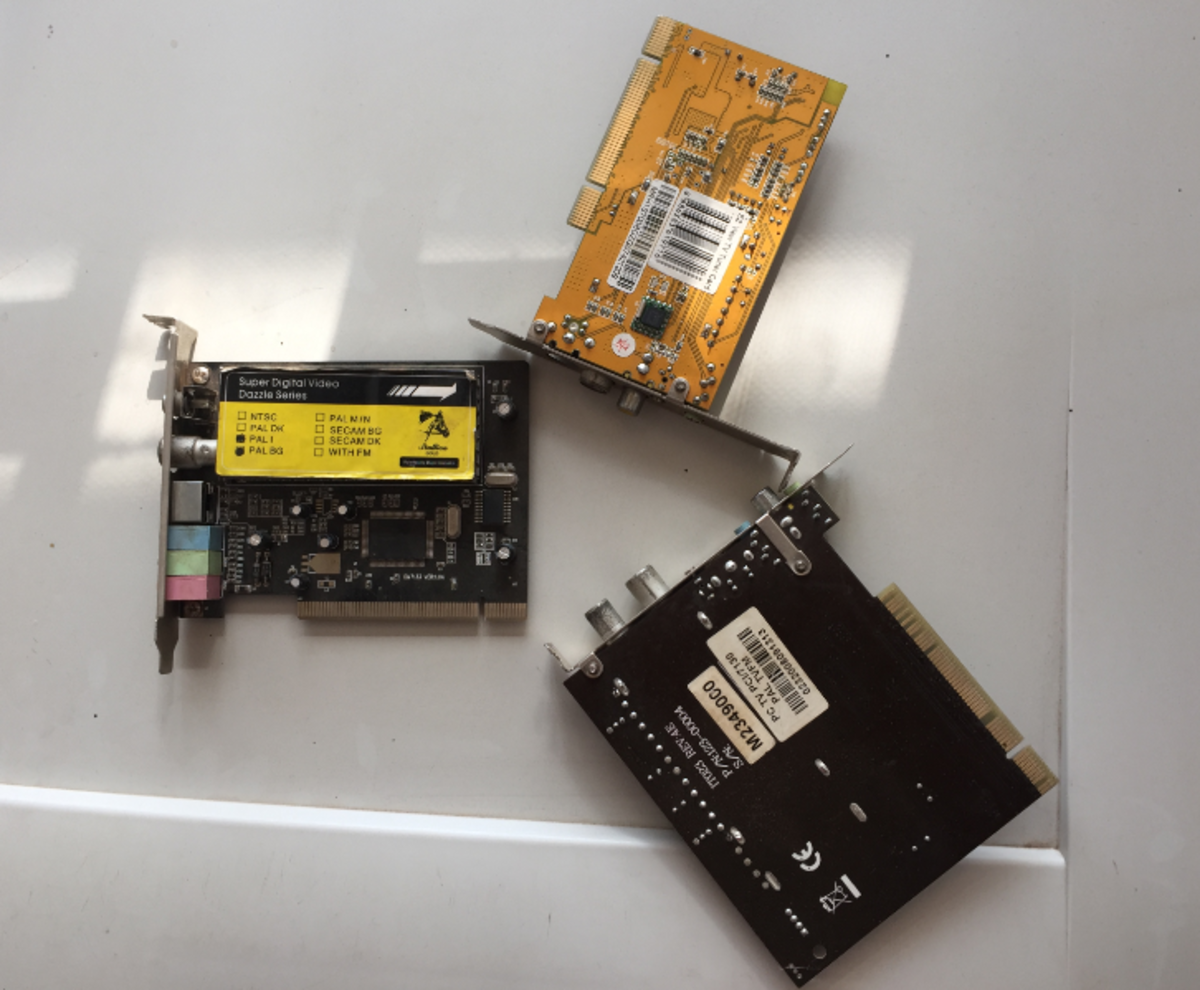How to Tune a Piano: Tips and Tools Needed
"It's a BIG and strenuous job, but someones gotta do it". And that's the truth. Before we begin, I feel it incumbent upon myself to briefly explain how tedious, time consuming, and potentially difficult or even impossible the art of tuning a piano can be for the novice, especially if you're striving for a professional sounding end result. On the other hand, if your main goal is to simply make the instrument sound "acceptable", or a little better than it does right now while saving a substantial sum of money on hiring a professional, then giving it a try yourself with the essential assistance of proper tools, might turn out to be a wise decision. The average expertly skilled pro will charge anywhere from $100 to $300+ depending on several integral factors including the job complexities or lack thereof, and although it may seem like a costly endeavor at first thought, if the work is guaranteed for a pre-determined duration, in my opinion it's money very well spent.
Monetary aspects aside, another important consideration before you attempt this project on your own is understanding the fact that it may take more than one complete tuning session to achieve desired results, and even after this is accomplished, just like a guitar, bass, or any other stringed instrument, the piano may get "knocked" out of perfect pitch within a short period of time after the initial job is done. So remember, minor adjustments will be required on a regular basis and the frequency of "Touch Ups" will depend upon the pianos age, condition of the working parts, attentiveness and dedication to instrument maintenance, and of course how often it's played.
- Things to Check BEFORE Proceeding -
- Check strings to determine if there's any excessive corrosion which may indicate potential string weakness and possible propensity to snap or break -
- Check the "Pins" or "Pegs" to make sure they turn without excessive physical force -
- Make sure the electronic tuner is set to the proper position -
- Make sure you have a cushion for your forearm to avoid bruising from positioning & rotating the tuning wrench -
- Make sure you have a "Mute" or similar device to dampen piano strings -
- Check string & pin prices to make sure purchasing one or two is within your budget in case of a "SNAP" -
ADDITIONAL TUNING SESSIONS / REGULAR MAINTENANCE
- As expressed previously, depending upon the age of the instrument and internal parts, it may take additional tuning sessions following the initial one to achieve the desired sound, especially if this is the first time in several years it has gone through the complete adjustment process. Newer instruments might stay in tune for a longer period of time depending upon the make and quality of craftsmanship, and remember, regardless of age or make, there's a good chance occasional adjustments will be needed to keep your piano in tune and sounding its best.
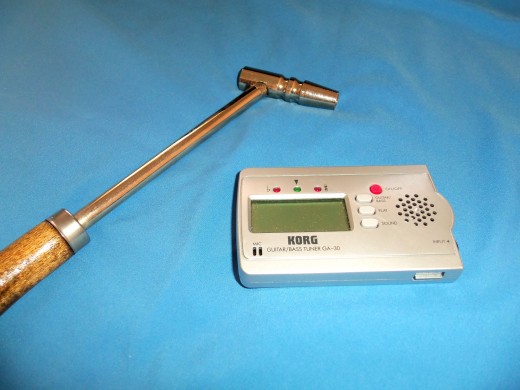
TOOLS NEEDED
> Wrench ( Tuning Hammer ) - A tool that actually turns the pins for pitch or sound adjustment. Very similar to a socket wrench without the rotating handle. It's used to either tighten or loosen the piano strings by applying manual pressure and tension to the "Pin" which changes the strings pitch "Flat or "Sharp". There are two different types, one has a star shaped metal receiver and the other square. It can be purchased online or at your local music supply store for $25 and up. Or you can purchase a "Piano Tuning Kit" which typically includes the Wrench, Mutes, and a Tuning Fork etc. Price range can be significantly higher. Check the piano pins to determine which is required and have this info ready before shopping.
> Mute - A "Wedge" shaped instrument which is placed in between strings to "Mute" the sound so tuning one individual string at a time is possible. Each individual piano key has 1, 2, or 3 corresponding strings that need to be adjusted.
> Electronic Tuner - Many experts exhibit the musical audacity to simply use a respective "Ear" and a "Tuning Fork" as a matter of preference, and needless to say, it can quickly morph into an extremely difficult, time consuming, and on occasion, a regrettably impossible procedure. A frustrating endeavor that I would certainly not recommend for the beginner. When exclusively utilizing a tuning fork to establish and adjust pitch, the entire keyboard thereafter must be precisely "tuned by ear", which is a difficult enough accomplishment for the experienced professional. So unless you're the adventurous type with several weeks or even months of backlogged vacation time, a reserve upon which you can draw from in an effort to miraculously develop the "perfect pitched ear", I would strongly advise against it. Instead, shop around online for a good electronic tuner.

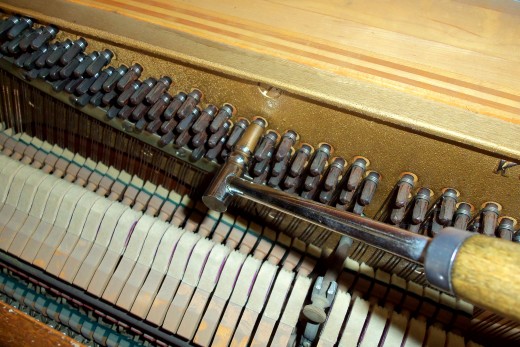
TUNING THE PIANO
Where should you begin tuning? At the low end? High end? Middle? In this example we will begin the tuning process in the center of the keyboard.
The electronic tuner I use is designed for a guitar, but works rather well for other instruments including the bass and piano to a certain degree. It can also be adjusted for respective "Flats" and "Sharps". Once you're 30 minutes or so into the session, you'll begin to get a good feel for the instrument and what the job actually entails. - Remember, if you're unsure about how to proceed, or if it takes an excessive amount of brute force to turn the string pin, stop immediately and contact a professional. Excessive force can cause a string to snap or pin to break - Proceed with Caution -
Set the tuner down in a safe place on the piano, just close enough so that it can absorb and read the audio signal, then depress the first key. If the note is "Flat" the indicator needle will move to the left and light up "Red", if it's "Sharp" the needle will move right and light up "Red". Green and In the middle is where we need to be. Take the "Mute" and place it on one of the two strings to "Muffle" the sound and proceed with the pin adjustment by rotating the tuning hammer (wrench) either clockwise or counterclockwise until the indicator moves to the center, turns green, and stays green. Then repeat the same steps for the other pin which corresponds with the same piano key.
Now you can proceed to the left or right and tune each key in succession. The left third of the keyboard contains keys consisting of one string, the middle will have two strings, and the entire right quadrant will have three strings per piano key, so make adjustments accordingly by "Muting" and tuning one string at a time.
The "High" end keys of the piano are typically the most difficult to manipulate and adjust due to the limited amount of space to maneuver.
- Continue until all strings that respond to the electronic tuner are done then proceed to "Tuning by Ear"
NOTE - Make sure to adjust your electronic tuner to the "Sharp" setting when adjusting the "Sharp" or "Black" keys.
TUNING BY EAR
It's a relatively simple concept in theory however, in actual practice, trying to find that "Perfect Pitch" on the remaining keys which do not respond to the electronic tuner, can be very time consuming and somewhat frustrating especially for the beginner. Here's the step by step process:
- Begin with the keys that have already been adjusted with the electronic tuner and find the corresponding note that is an octave higher or lower.
- Alternately depress the electronically tuned key and the untuned octave key.
- Make adjustments accordingly, either tighten or loosen the string pin.
- The best way to gauge if your tuning properly is to press each key separately about a second apart, and then both together to see if they are in "Sync" or at the same pitch. Keep making adjustment until they sound exactly the same ( Perfect Pitch ).
Typically, it takes years of hands on experience to develop a good feel for the job, however, barring any unforeseen issues or problems, even the novice should be able to achieve noticeable improvement, and in the best case scenario, he or she produces a finely tuned instrument worthy of professional praise.
NOTE: If at any time during the tuning process you have questions or are unsure about how to proceed, contact a professional for consultation-

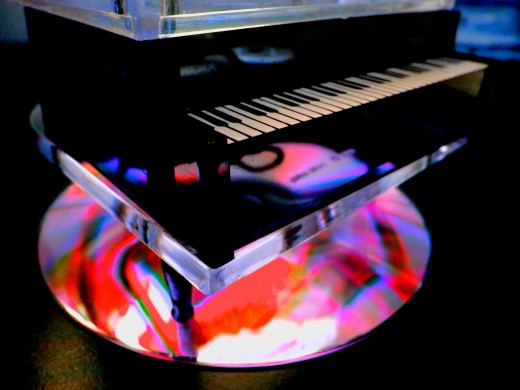

- How to Mic and Record Drums to get a Great Professio...
Recording drums can be one of the most challenging aspects of creating a quality audio experience. They are without a doubt the Backbone of any rhythm section and the central driving force that energizes song....



<> Conceived * Designed * Developed * Written * Created By Alternative Prime <>
|
|---|
<> Exclusive Original Images Created By Alternative Prime <>
|
|---|

- "Read & Experience" more literary and original visual works by this highly acclaimed author / publisher - Click "Alternative Prime" next to avatar at top of page -
|
|---|

